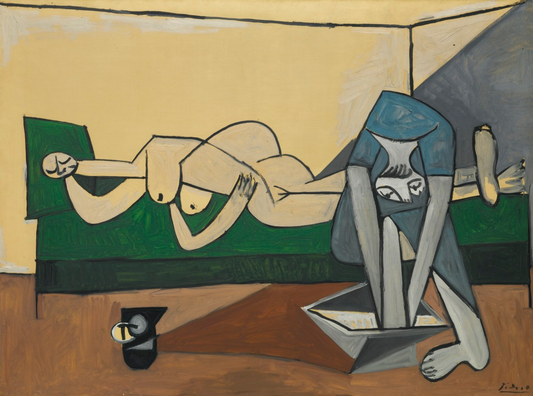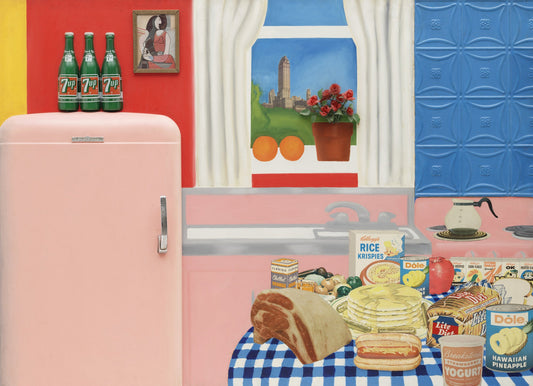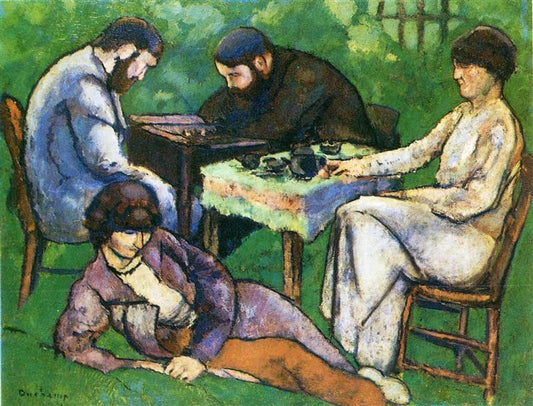Feature image: Brassai, Dali and Gala via MutualArt
Passion and Paint: The Artists and Their Muses Who Shaped Art History
Throughout art history, love and creativity have intertwined in the lives of many great painters. Some found inspiration in their spouses, while others were shaped by intense, often turbulent relationships with their muses. These partnerships—filled with admiration, rivalry, and creative exchange—left an indelible mark on their works.
Salvador Dalí and Gala: The Surrealist’s Devotion
Salvador Dalí’s relationship with Gala was one of obsession and reverence. Born Elena Ivanovna Diakonova, Gala was initially married to poet Paul Éluard before meeting Dalí in 1929. She became his muse, manager, and the unwavering force behind his career. Dalí’s surrealist masterpieces frequently feature Gala, depicting her as a divine or ethereal figure, such as in Leda Atomica and Galatea of the Spheres. She controlled his finances, orchestrated his exhibitions, and nurtured his eccentric persona. Their relationship, however, was unconventional—Gala engaged in affairs, and Dalí, deeply dependent on her, accepted her infidelities. Despite their unusual dynamic, Gala was indispensable to Dalí’s creative genius, and he remained devoted to her until she died in 1982.


Lee Krasner and Jackson Pollock: The Battle of Expression
Lee Krasner and Jackson Pollock’s marriage was a fusion of passion and tension, marked by mutual artistic respect and personal struggles. An accomplished Abstract Expressionist, Krasner initially took a backseat to Pollock’s meteoric rise but played a crucial role in shaping his career. She introduced him to influential figures like Peggy Guggenheim, organized his studio, and managed his public image. However, Pollock’s alcoholism and self-destructive tendencies strained their relationship. Despite his struggles, Krasner continued championing his work, even after his untimely death in 1956. Following his passing, she stepped out of his shadow, producing some of her most powerful abstract pieces, proving that she was not just Pollock’s wife but an artist of equal caliber.

Helen Frankenthaler and Robert Motherwell: A Marriage of Minds
Helen Frankenthaler and Robert Motherwell were a power couple of Abstract Expressionism and Color Field painting. Both were successful in their own right, and their relationship was built on intellectual and artistic dialogue. Frankenthaler’s innovative soak-stain technique, seen in Mountains and Sea, influenced the movement, while Motherwell was renowned for his Elegy to the Spanish Republic series. Their marriage, from 1958 to 1971, was marked by mutual admiration and the challenge of maintaining individual artistic identities. While their styles were distinct, they found common ground in their dedication to modernist abstraction. Even after their divorce, both remained influential figures in the art world.

Camille Claudel and Auguste Rodin: A Tragic Muse
Camille Claudel and Auguste Rodin’s relationship was one of artistic brilliance and heartbreak. Claudel, a gifted sculptor, was initially Rodin’s student, later becoming his muse, collaborator, and lover. Her influence is evident in some of Rodin’s most famous works, including The Kiss and The Gates of Hell. However, while Rodin achieved widespread recognition, Claudel struggled for acknowledgment. Their affair ended painfully—Claudel, feeling overshadowed and betrayed, suffered a mental breakdown and was institutionalized for the rest of her life. Her sculptures, filled with raw emotion and technical mastery, are a testament to her talent, though her genius was largely unrecognized during her lifetime.


Frida Kahlo and Diego Rivera: A Love as Fiery as Their Art
Few artist relationships were as tempestuous and legendary as that of Frida Kahlo and Diego Rivera. Their marriage was filled with passion, betrayal, and artistic collaboration. Rivera, a renowned muralist, recognized Kahlo’s unique talent early on, supporting her as she developed her distinctive, deeply personal style. However, Rivera’s infidelities, including an affair with Kahlo’s sister, strained their bond. Kahlo, too, engaged in extramarital relationships, including rumored affairs with Leon Trotsky and other figures. Despite their tumultuous marriage, they remained fiercely connected, influencing each other’s work. Kahlo’s paintings, filled with pain and symbolism, often reflected her complex emotions towards Rivera, while Rivera immortalized her in some of his murals. Their love story remains one of the most fascinating in art history.

Georgia O’Keeffe & Alfred Stieglitz: Art, Love, and Legacy
Photographer Alfred Stieglitz discovered Georgia O’Keeffe in 1916, exhibiting her work before they met in person. Their passionate relationship fueled both their careers—Stieglitz captured O’Keeffe in over 300 portraits while she developed her iconic modernist style. They married in 1924, but Stieglitz’s affairs and O’Keeffe’s growing independence created tensions. Despite this, their artistic exchange remained profound, shaping American modernism. Even after he died in 1946, O’Keeffe continued to define her legacy, moving to New Mexico and becoming one of the most celebrated painters of the 20th century.


Anni and Josef Albers: A Partnership Woven in Color
Anni and Josef Albers were a powerhouse couple whose partnership shaped modern art and design. They met at the Bauhaus in Germany, where Anni studied weaving, and Josef taught color theory. Forced to flee the Nazi regime, they relocated to the U.S. and continued their creative pursuits at Black Mountain College. Josef’s groundbreaking work in color interaction and Anni’s revolutionary approach to textiles complemented each other, pushing the boundaries of their mediums. Their relationship was built on mutual admiration—Josef often credited Anni’s keen eye for material and form, while Anni described Josef’s color theories as a constant source of inspiration. Together, they proved that art and life could be seamlessly interwoven, influencing generations of artists and designers.

These artist couples exemplify how relationships can fuel creativity, inspire masterpieces, and sometimes consume the artists themselves. Whether through devotion, rivalry, or shared artistic vision, their partnerships undeniably mark art history. Their stories remind us that there is often a muse behind every great artist—sometimes a lover, sometimes a rival, but always a source of inspiration.
©ArtRKL® LLC 2021-2025. All rights reserved. This material may not be published, broadcast, rewritten or redistributed. ArtRKL® and its underscore design indicate trademarks of ArtRKL® LLC and its subsidiaries.





